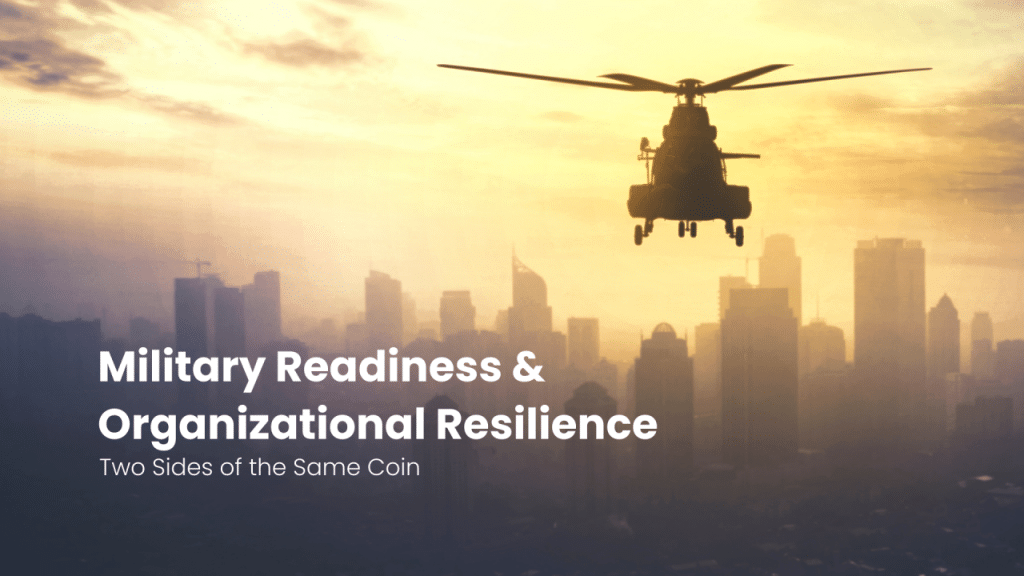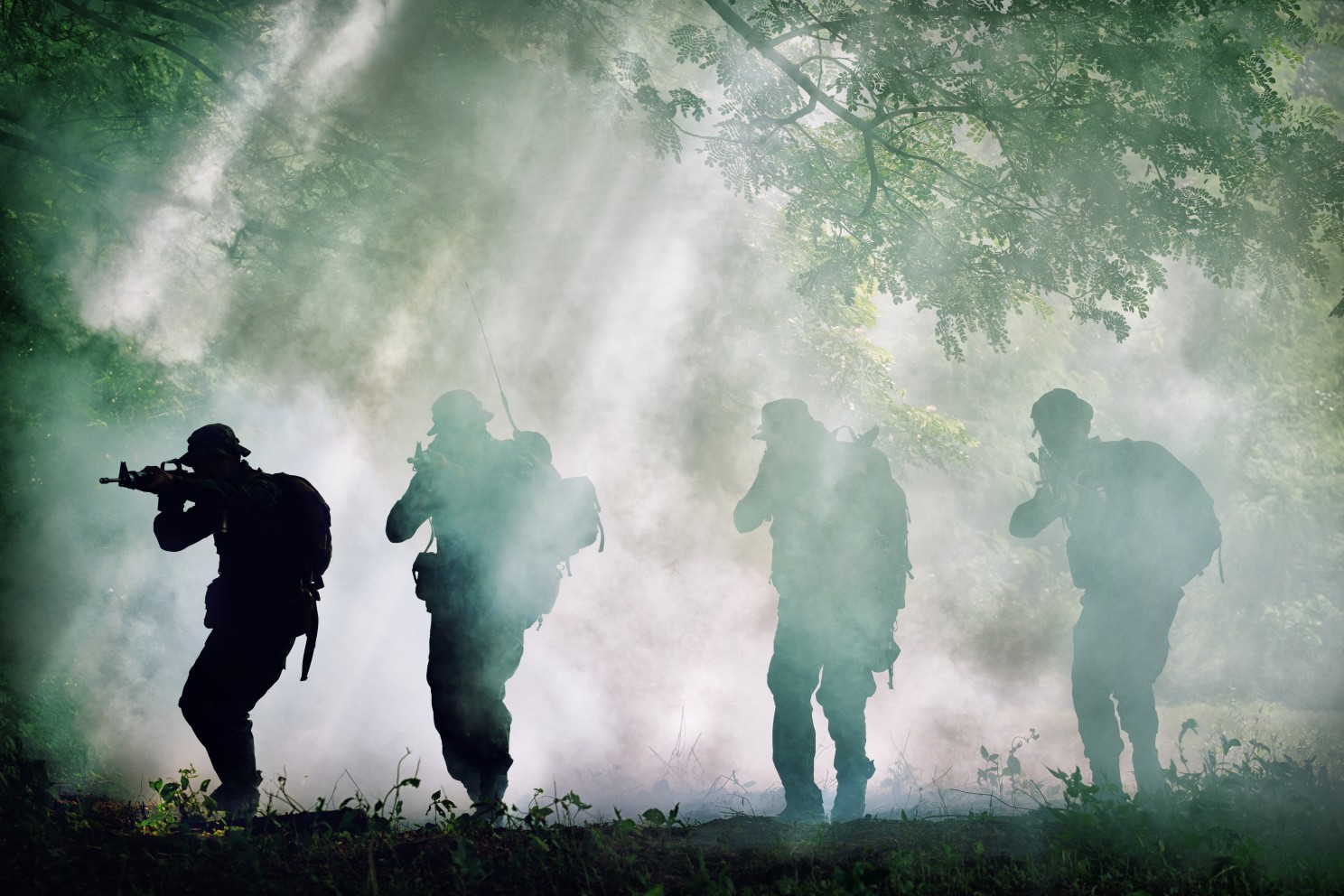Military Readiness & Organizational Resilience Two Sides of the Same Coin
How prepared is your organization to handle disruptions – whether on the battlefield or in the boardroom?
In both military and business settings, readiness and resilience are essential for organizations to stay agile, adaptable, and prepared for disruptions. While Military Readiness and Organizational Resilience may appear as two distinct concepts, they share significant overlap, both requiring a forward-looking approach to manage risks and maintain continuity.

What is Military Readiness?
Military Readiness, or Strategic Readiness, refers to the ability of a military force to transition swiftly from routine operations to a state of warfighting. Success in this transition depends on having the right tools – arms, technology, personnel, logistics, and operational plans – working together to meet strategic goals.
Disruptions can happen at any point – from transitioning to combat or during the conflict itself
These disruptions may arise from environmental factors, logistical hurdles, or even internal military challenges. When continuity of operations is compromised, military readiness and the ability to achieve objectives are directly impacted. Military forces must continually assess their readiness, not only against external threats but also internal changes. This includes evaluating how current operations affect future readiness. The challenge lies in striking the balance between meeting present operational demands while preparing for tomorrow’s missions.

Resilience as a Core of Military Readiness
Resilience is not just an add-on to military readiness—it is essential. A military’s ability to absorb and adapt to disruptions while maintaining operational continuity is a direct measure of its readiness. Assessing readiness, therefore, involves evaluating the organization’s capacity to withstand and recover from disruptions, both external (environmental) and internal (operational decisions). Without resilience, long-term strategic goals are at risk.
What is Organizational Resilience?
Similarly, Organizational Resilience is the ability of a business to absorb, adapt to, and recover from crises. Whether it’s climate change, supply chain issues, or geopolitical crises, these disruptions threaten business continuity. Organizational Resilience is built on proper planning, resource allocation, and having the right assets like finance, IT, personnel, and a strong supply chain.
Organizations must consistently assess how potential disruptions could impact their business. This involves conducting Business Impact Analysis (BIA) to identify critical capabilities, bottlenecks, and simulate how damage to these areas can affect the entire organization.
The way resources are allocated today directly influences how well the organization will recover tomorrow
Readiness is Key to Resilience
Just as in the military, readiness is the cornerstone of resilience in the business world. Being prepared for future disruptions and having robust plans in place ensures that organizations can continue operations during crises. Evaluating readiness, therefore, involves assessing how well the organization is positioned to manage future risks and crises. Businesses that regularly assess their readiness are better equipped to maintain continuity when facing unexpected challenges.

Prepared for Anything – The Readiness-Resilience Connection
In both Military Readiness and Organizational Resilience, the challenge is twofold:
Preparing the most relevant assets for future disruptions and ensuring continuity through crises
Military Readiness is about preparing assets for future missions and maintaining operational continuity through disruptions. Assessing resilience is an integral part of evaluating readiness.
Organizational Resilience focuses on maintaining business continuity while preparing critical assets to face future disruptions. Assessing readiness is a key component in building resilience.
Preparedness goes beyond simply reacting to challenges – it’s having the foresight to grow from disruptions. When organizations, whether military or corporate, build resilience into their foundation, they turn disruptions into opportunities to transform and evolve.

